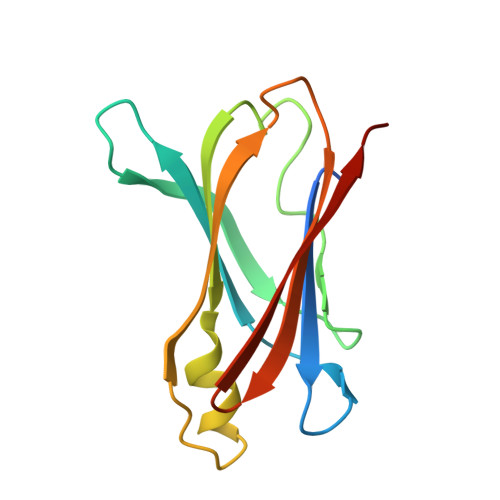Potent kinetic stabilizers that prevent transthyretin-mediated cardiomyocyte proteotoxicity.
Alhamadsheh, M.M., Connelly, S., Cho, A., Reixach, N., Powers, E.T., Pan, D.W., Wilson, I.A., Kelly, J.W., Graef, I.A.(2011) Sci Transl Med 3: 97ra81-97ra81
- PubMed: 21865539
- DOI: https://doi.org/10.1126/scitranslmed.3002473
- Primary Citation of Related Structures:
3P3R, 3P3S, 3P3T, 3P3U - PubMed Abstract:
A valine-to-isoleucine mutation at position 122 of the serum protein transthyretin (TTR), found in 3 to 4% of African Americans, alters its stability, leading to amyloidogenesis and cardiomyopathy. In addition, 10 to 15% of individuals older than 65 years develop senile systemic amyloidosis and cardiac TTR deposits because of wild-type TTR amyloidogenesis. Although several drugs are in development, no approved therapies for TTR amyloid cardiomyopathy are yet available, so the identification of additional compounds that prevent amyloid-mediated cardiotoxicity is needed. To this aim, we developed a fluorescence polarization-based high-throughput screen and used it to identify several new chemical scaffolds that target TTR. These compounds were potent kinetic stabilizers of TTR and prevented TTR tetramer dissociation, partial unfolding, and aggregation of both wild type and the most common cardiomyopathy-associated TTR mutant, V122I-TTR. High-resolution co-crystal structures and characterization of the binding energetics revealed how these diverse structures bound to tetrameric TTR. These compounds effectively inhibited the proteotoxicity of V122I-TTR toward human cardiomyocytes. Several of these ligands stabilized TTR in human serum more effectively than diflunisal, which is a well-studied inhibitor of TTR aggregation, and may be promising leads for the treatment or prevention of TTR-mediated cardiomyopathy.
Organizational Affiliation:
Department of Pathology, Stanford University Medical School, Stanford, CA 94305, USA.















